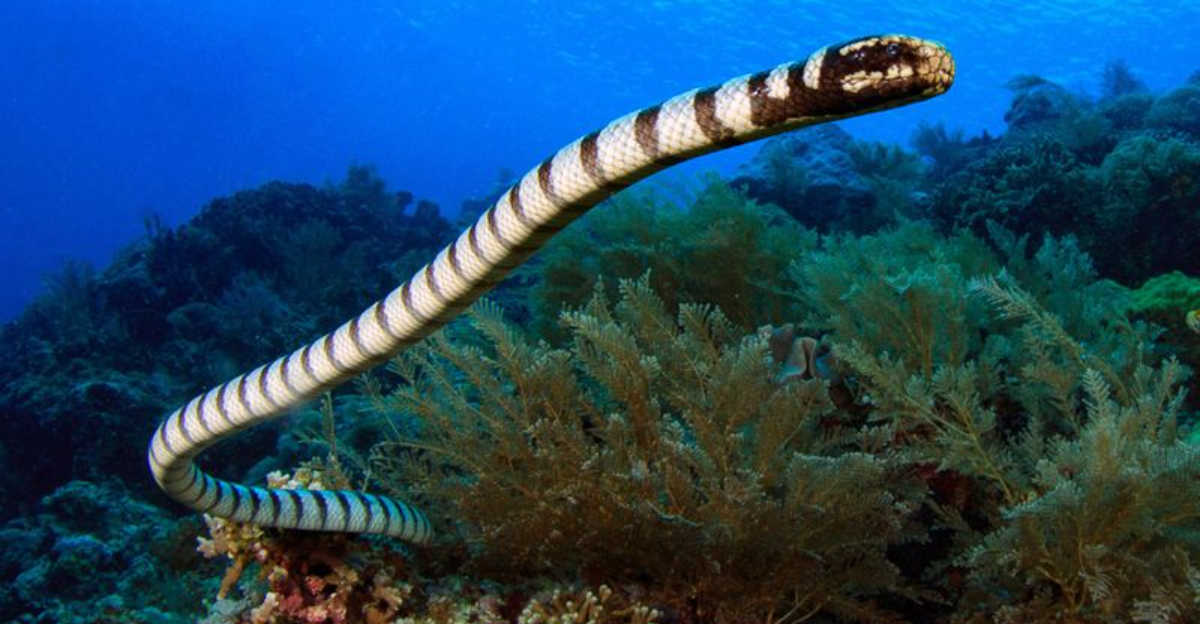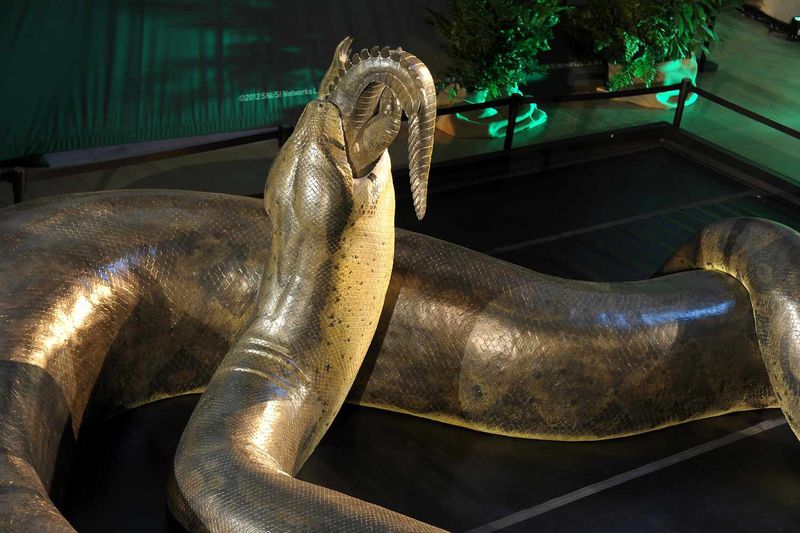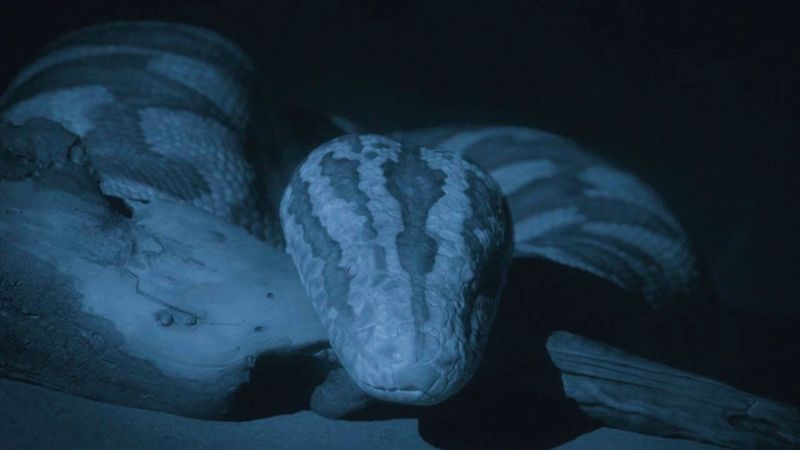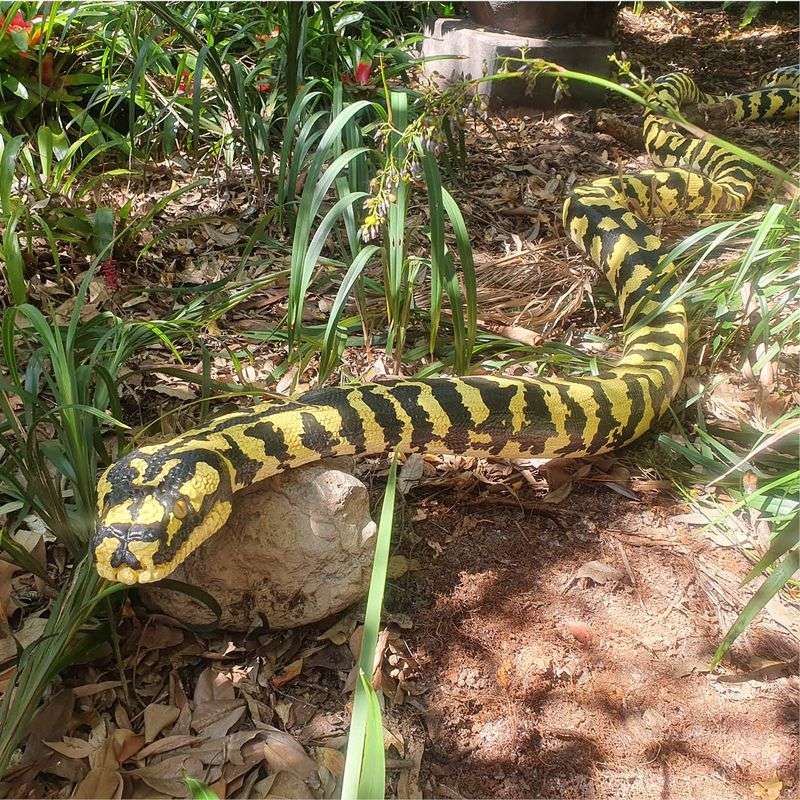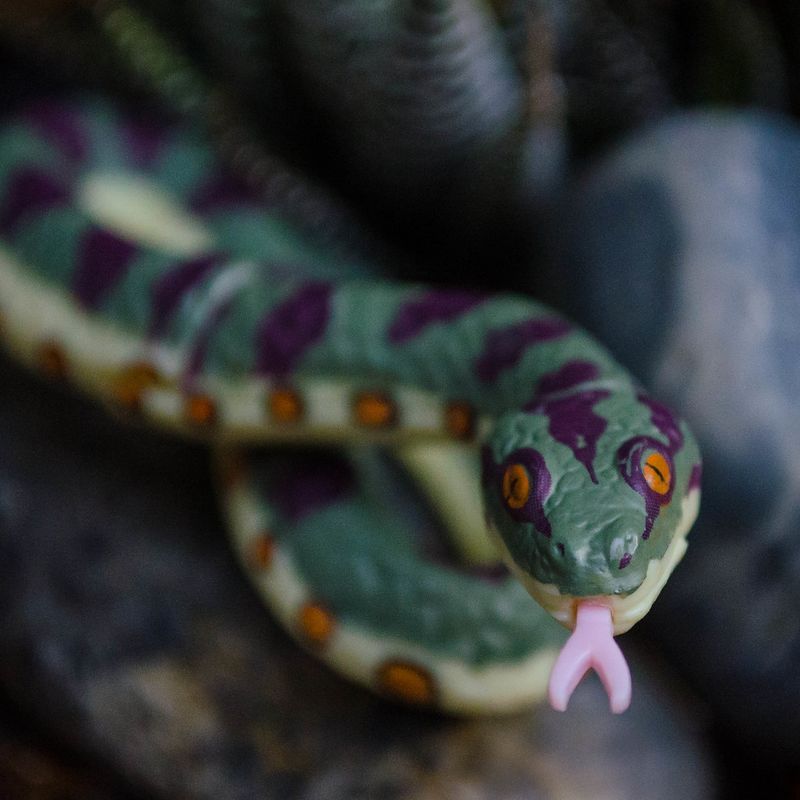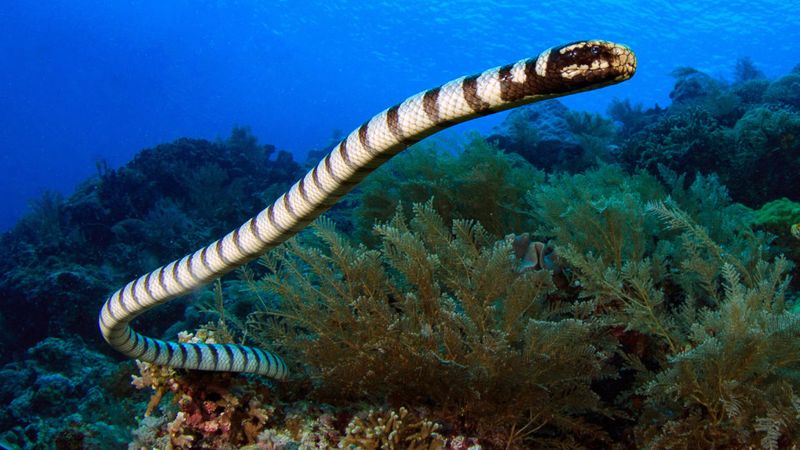📖 Table of Content:
Throughout history, Earth’s most fearsome snakes have inspired both awe and fear, dominating prehistoric landscapes. These colossal serpents, now long extinct, left behind fossilized evidence of their immense size and power. Their legacy offers a glimpse into a time when giant snakes ruled land and water with unrivaled strength.
From serpents large enough to swallow crocodiles to others capable of constricting prey with unimaginable force, these creatures were apex predators of their environments. Their fossils reveal just how formidable they were, showcasing adaptations that made them master hunters. Each discovery adds another layer to the story of these ancient reptiles.
Join us as we uncover 6 of the most terrifying extinct snakes that once slithered across the Earth. These serpents’ size and predatory prowess cement their place in the annals of natural history. Prepare to meet the giants that left behind a legacy both fascinating and fearsome.
1. Titanoboa
Dominating the tropical ecosystems of ancient Colombia, Titanoboa stands as the largest snake ever discovered. Stretching up to 42 feet and weighing over a ton, this prehistoric giant reigned as a true serpent monster. Inhabiting swampy, humid forests, it hunted massive prey, including giant crocodiles. Imagine the sheer power as it constricted its victims with unimaginable force.
Despite its intimidating size, scientists believe Titanoboa was a crucial ecosystem player, maintaining balance by controlling prey populations. Its massive size was likely due to warmer global temperatures, which allowed cold-blooded reptiles to grow larger. As Earth’s climate shifted, Titanoboa vanished, leaving only fossils behind.
2. Madtsoia
Roaming prehistoric Australia and South America, Madtsoia was a giant snake that adapted to a range of environments. Growing over 30 feet long, this powerful constrictor preyed on sizeable ancient creatures, thriving in both rocky terrains and lush forests.
The discovery of Madtsoia fossils has helped paleontologists understand the evolutionary history of snakes. Its adaptability to various habitats highlights its survival skills in a changing world. Although Madtsoia’s legacy is now confined to fossils, its existence underscores the rich biodiversity of ancient ecosystems.
3. Yurlunggur
A prominent animal in Australia’s prehistoric past, Yurlunggur, is often called the “rainbow serpent.”This gigantic snake, reaching lengths of over 20 feet, is deeply rooted in Aboriginal mythology, symbolizing creation and fertility.
Although Yurlunggur is steeped in legend, its fossils provide real evidence of its existence. It thrived in Australia’s unique environment, preying on a variety of other animals. The combination of myth and science makes Yurlunggur a fascinating study, bridging cultural beliefs and paleontological discovery. Its extinction marked the end of an era in the continent’s ecological history.
4. Wonambi
Formidable and ancient, Wonambi slithered through Australia’s wetlands as a powerful constrictor millions of years ago. Extending over 20 feet, it shared its habitat with a diverse range of prehistoric fauna, including giant marsupials.
Its hunting technique of ambushing prey near water sources made it a successful predator. Fossils reveal that Wonambi played a critical role in its ecosystem, controlling populations of other species. Despite its eventual extinction, the discovery of Wonambi remains has enriched our understanding of prehistoric Australia’s ecological complexity. It serves as a reminder of the delicate balance within natural habitats.
5. Sanajeh
A fascinating relic of the Late Cretaceous, Sanajeh, provides a rare glimpse into ancient ecosystems. Unlike its mega-sized relatives, it measured around 11 feet, still impressive for its time. Its fossils were found in India, often near dinosaur eggs, suggesting a niche role in this prehistoric world.
Sanajeh’s interactions with dinosaurs hint at its opportunistic feeding habits, possibly preying on young dinosaurs or scavenging eggs. This behavior provides valuable insights into the ecological interactions of the era. The name Sanajeh, meaning “ancient gape,” reflects its wide jaw and intriguing lifestyle.
6. Palaeophis
Palaeophis represents a group of marine snakes that once thrived in the warm coastal waters of the Eocene epoch. These serpents could grow up to 30 feet, navigating oceans with ease and preying on fish and other marine creatures.
The discovery of Palaeophis fossils sheds light on ancient marine ecosystems and snake evolution. Their existence indicates a time when Earth’s seas were warm and teeming with life. Understanding these snakes helps scientists piece together the puzzle of prehistoric marine biodiversity and the factors leading to their extinction.
